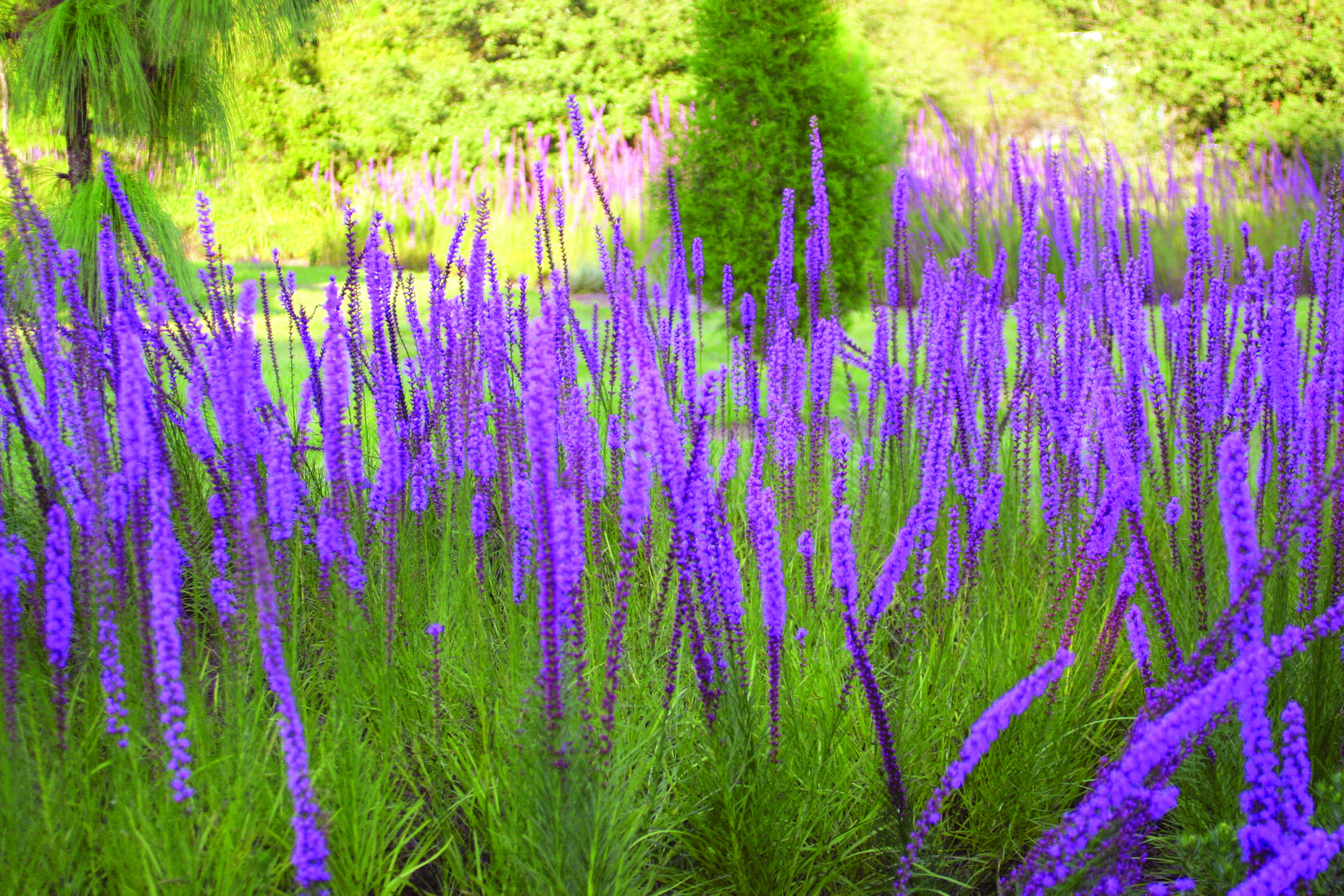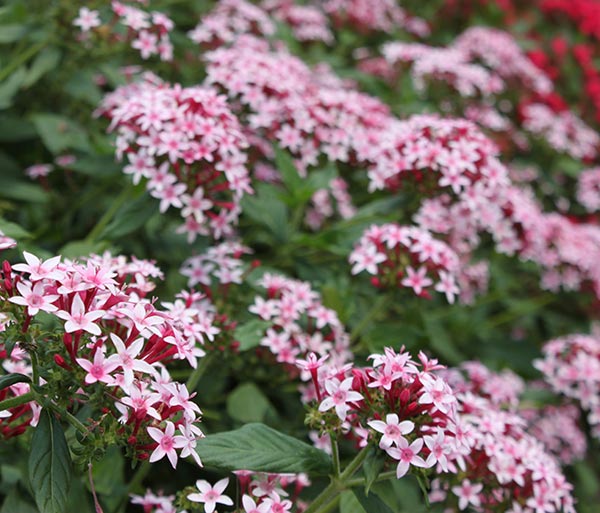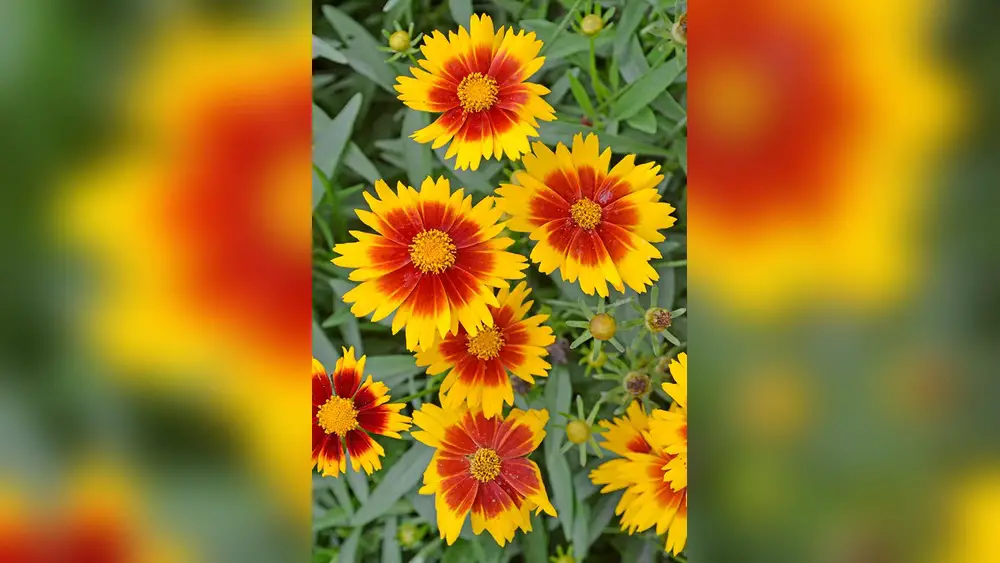If you want your Florida garden to burst with vibrant, lasting beauty, knowing the best time to plant perennials is key. Planting at the right moment helps your flowers develop strong roots, survive the heat, and bloom year after year.
Since Florida’s climate is unique—with warm winters and hot summers—you might wonder when is the ideal time to get your perennials into the soil. Should you plant in spring, fall, or even summer? Keep reading to discover the simple timing tricks that will make your garden thrive, save you effort, and ensure your plants reach their full potential in the Sunshine State.
Your dream garden starts with the perfect planting schedule!
Florida Planting Seasons
Florida’s climate lets gardeners plant perennials through most of the year. The state has mild winters and hot summers. This creates unique opportunities for planting. Choosing the right season helps perennials establish strong roots. It also improves their chances to thrive.
Understanding Florida’s planting seasons helps you pick the best time. This guides you to plant healthy, beautiful perennials that last.
Spring And Fall Benefits
Spring and fall are the top seasons for planting perennials. The weather is cooler and wetter. This lowers stress on new plants. Soil stays moist longer, helping roots grow deep. Plants have time to settle before hot or cold extremes arrive. Spring planting lets perennials bloom all summer. Fall planting gives roots time to grow before winter. Both seasons reduce the need for extra watering.
Summer Planting Tips
Summer in Florida is hot and humid. Planting perennials then needs care. Choose heat-tolerant or tropical varieties. Water plants deeply and often to prevent drying. Use mulch around plants to keep soil cool. Plant early in the morning or late afternoon. Avoid planting during the hottest midday hours. Summer planting can work well with these steps.
Year-round Possibilities
Florida’s mild winters allow planting almost anytime. Some perennials grow well even in winter. This gives gardeners flexibility. Planting outside spring and fall means watching soil moisture closely. Protect young plants from frost in colder areas. Use mulch to protect roots during cooler months. Year-round planting can fill your garden with color all the time.
Perennial Growth Phases
Perennials in Florida grow through clear stages. Knowing these growth phases helps you plant at the right time. Each phase needs different care and attention for the best results. Understanding these stages supports healthy plants and beautiful blooms.
Root Development Stage
This stage happens right after planting. The plant focuses on growing roots under the soil. Above-ground growth stays small or slow. The roots spread to find water and nutrients. Watering is very important now to help roots settle. This stage sets the base for strong plants later.
Above-ground Growth
Roots become stronger during this phase. The plant starts growing more leaves and stems. You will see visible growth above the soil. The plant still builds roots but spends more energy on leaves. Adding fertilizer can help give nutrients for growth. Watch for steady progress in this time.
Mature Growth And Blooming
At this point, roots are well developed. The plant shows fast, healthy growth above ground. Leaves become fuller and flowers begin to bloom. The perennial reaches its full size and beauty. Proper care supports strong blooms and long-lasting plants. This phase is the reward for patient gardening.
Watering And Fertilizing
Watering and fertilizing are key for healthy perennials in Florida’s climate. These plants need steady care to thrive, especially after planting. Proper water helps roots grow deep and strong. Fertilizer supplies essential nutrients for steady growth and vibrant blooms. Both watering and feeding work together to support your garden’s success.
Consistent Moisture Needs
Perennials in Florida require regular watering to stay healthy. The soil should be moist but not soggy. Water deeply to encourage strong root growth. Avoid shallow watering that dries out quickly. Early morning watering reduces evaporation and disease risks. During dry spells, increase watering frequency. Mulch helps keep moisture in the soil longer. Consistent moisture is vital during the first few weeks after planting.
Supporting Growth With Fertilizer
Fertilizer provides nutrients that soil may lack. Use a balanced, slow-release fertilizer for steady feeding. Apply fertilizer in early spring to boost new growth. Avoid over-fertilizing, which can harm plants and the environment. Side-dress perennials with fertilizer during the growing season for extra support. Organic options like compost improve soil health naturally. Proper feeding helps perennials reach full size and bloom beautifully.

Credit: www.flawildflowers.org
Choosing Florida Perennials
Florida’s climate challenges gardeners with heat, humidity, and occasional drought. Choosing the right perennials is key for a thriving garden. Select plants that can handle Florida’s unique weather. This helps ensure your garden stays healthy and vibrant year-round.
Perennials that suit Florida’s conditions need less water and care. They survive well through hot summers and mild winters. The right choice also supports local wildlife and reduces garden stress.
Heat-tolerant Varieties
Heat-tolerant perennials thrive in Florida’s intense sun and high temperatures. Plants like Lantana, Blanket Flower, and Coral Honeysuckle do well. These varieties resist wilting and recover quickly after dry spells.
Choose perennials that can handle full sun exposure. They require less watering and stay colorful in summer heat. This saves time and water, making gardening easier and more sustainable.
Native Plant Options
Native perennials are adapted to Florida’s soil and climate naturally. Examples include Firebush, Swamp Milkweed, and Florida Anise. These plants attract pollinators like butterflies and bees.
Using native plants supports the local ecosystem. They need less fertilizer and pesticides, which is better for the environment. Native perennials also have stronger resistance to local pests and diseases.
Low-maintenance Choices
Low-maintenance perennials save effort and reduce garden upkeep. Consider plants like Society Garlic, Muhly Grass, and Salvia. These require minimal pruning and watering once established.
Pick perennials that adapt well to different soils and light conditions. They stay healthy with little care and provide long-lasting beauty. Such choices are perfect for busy gardeners or beginners.
Colorful Perennial Picks
Choosing colorful perennials can brighten any Florida garden. These plants add vibrant hues that last through seasons. Perennials thrive well in Florida’s warm climate and bring lasting beauty. Selecting the right varieties ensures your garden stays lively year-round. Here are some popular colorful perennials perfect for Florida gardens.
Pentas Varieties
Pentas plants produce star-shaped flowers in bright pink, red, and white. They attract butterflies and hummingbirds easily. These perennials bloom from spring to fall with minimal care. Pentas prefer full sun but tolerate partial shade well. Their long blooming season adds color for many months. They grow well in Florida’s sandy soils and heat.
Hibiscus Features
Hibiscus plants offer large, showy flowers in many colors. Common shades include red, yellow, orange, and pink. These tropical perennials love Florida’s warm weather and sun. Hibiscus flowers open daily and last only one day but appear continuously. They grow as shrubs or small trees, giving garden structure. Regular watering helps hibiscus produce the best blooms.
Stokes Asters Appeal
Stokes asters display daisy-like flowers in purple, pink, or white. They bloom in late summer and fall, adding late-season color. These perennials attract bees and butterflies, aiding pollination. Stokes asters prefer sunny spots with well-drained soil. They tolerate heat well and require little maintenance. Their vibrant flowers create a cheerful garden display.

Credit: costafarms.com
Drought-resistant Plants
Drought-resistant plants thrive in Florida’s hot, dry spells. They need less water and survive tough weather. These perennials save water and stay beautiful with little care. Choosing drought-tolerant plants helps your garden stay green and healthy. It also reduces your water bills and effort.
Planting drought-resistant perennials at the right time boosts their survival. Spring and fall are best for planting in Florida. These seasons give mild temperatures and some rain. Your plants will grow strong roots before hot months arrive.
Yarrow Characteristics
Yarrow is a tough, drought-tolerant plant. It has feathery green leaves and clusters of small flowers. These flowers come in white, yellow, pink, or red. Yarrow attracts butterflies and bees to your garden. It grows well in full sun and dry soil. It needs little water once settled. Yarrow spreads quickly and controls erosion on slopes.
Firebush And Plumbago
Firebush is a colorful shrub with red-orange flowers. It blooms almost year-round in Florida’s climate. Firebush attracts hummingbirds and butterflies. It tolerates heat and dry soil after planting. Plumbago has blue or white flowers. It blooms from spring to fall and grows fast. Plumbago thrives in full sun and well-drained soil. Both plants add vibrant color and need minimal water.
Rock Rose Benefits
Rock Rose is a low-growing shrub with bright flowers. It blooms in pink, yellow, or white shades. This plant thrives in poor, sandy soils and full sun. Rock Rose is very drought-tolerant and heat-resistant. It requires almost no watering once established. It also attracts pollinators like bees and butterflies. Rock Rose helps reduce garden maintenance and water use.
Attracting Pollinators
Attracting pollinators is key to a healthy garden in Florida. Pollinators like bees and butterflies help plants produce seeds and fruit. Planting the right perennials can invite these helpful creatures to your garden. Timing your planting ensures flowers bloom when pollinators are most active. This boost in pollinator visits supports your garden’s growth and the local ecosystem.
Milkweed Importance
Milkweed is vital for many pollinators, especially monarch butterflies. It serves as the only host plant for monarch caterpillars. Without milkweed, monarch populations struggle to survive. Plant milkweed perennials in early spring or fall for best growth. These plants also provide nectar for bees and other butterflies. Including milkweed in your garden helps maintain pollinator diversity and health.
Butterfly-friendly Plants
Butterflies need specific plants for food and shelter. Choose perennials with bright, nectar-rich flowers. Coneflowers, lantanas, and pentas work well in Florida gardens. Plant these perennials during cooler months like spring or fall. These plants attract many butterfly species and support their life cycles. A variety of butterfly-friendly plants keeps your garden lively and colorful.
Plant Spacing And Trimming
Proper plant spacing and trimming play key roles in growing healthy perennials in Florida. These steps help plants get enough air and light. They also reduce disease risks and improve flowering. Knowing the right way to space and prune your perennials ensures strong growth and vibrant blooms.
Optimal Spacing Techniques
Give each plant enough room to grow. Space perennials based on their mature width. Crowded plants compete for nutrients and water. This can stunt growth and reduce flower production. Use the plant tag or guide for spacing advice. Leave at least 12 to 18 inches between small perennials. Larger types need 24 to 36 inches or more. Proper spacing allows air to flow, keeping leaves dry. This lowers the chance of fungal diseases common in Florida’s humid climate.
Pruning For Health
Trim perennials to remove dead or damaged parts. This helps plants focus energy on new growth. Prune spent flowers to encourage more blooms. Cut back tall or leggy stems to keep plants tidy. Avoid heavy pruning during Florida’s hottest months. Early spring or after blooming is best. Use clean, sharp tools to prevent infection. Regular trimming improves air circulation inside the plant. It also reduces pests hiding spots. Healthy pruning supports a strong root system and overall plant vigor.
Long-term Care Tips
Long-term care is key for healthy perennials in Florida gardens. Proper attention helps plants thrive through changing seasons and weather. Understanding growth stages and maintenance needs supports lasting beauty and vigor.
The Three-year Growth Rule
Perennials follow a growth pattern called the “three-year rule.” Year one focuses on root growth. The plant may not show much above ground. This is normal and important for stability.
In year two, roots strengthen and shoots grow more. Plants start to look fuller and healthier. Fertilize lightly to support this stage.
By year three, perennials reach maturity. They bloom fully and spread well. After this, growth slows but plants stay strong.
Maintaining Plant Health
Regular watering keeps roots moist but not soggy. Avoid overwatering to prevent root rot. Mulch helps keep soil temperature steady and retains moisture.
Remove dead leaves and spent flowers. This prevents disease and encourages new growth. Watch for pests and treat them early with safe methods.
Prune perennials after blooming to shape plants and promote air flow. Use balanced fertilizer in spring to feed new shoots. Healthy perennials need consistent care for best results.

Credit: www.revivalgardening.com
Frequently Asked Questions
What Is The Best Month To Plant In Florida?
The best months to plant in Florida are spring (March to May) and fall (September to November). These seasons offer milder temperatures and optimal soil conditions. Heat-tolerant plants can also be planted in summer with proper watering to ensure healthy growth.
What Is The 3 Year Rule For Perennials?
The 3-year rule for perennials means they take about three years to fully establish roots and reach mature growth. During this time, focus on consistent watering and minimal disturbance to support healthy development.
What Is The Best Perennial Plant In Florida?
The best perennial plants in Florida include heat-tolerant, low-maintenance options like Pentas, Hibiscus, Stokes Asters, Firebush, and native Swamp Milkweed. These thrive well in Florida’s climate, providing vibrant blooms and attracting pollinators with minimal care.
What Month Is Best To Plant Perennials?
The best months to plant perennials are spring and fall. These seasons offer mild temperatures and optimal soil moisture for root growth. Planting during these times helps perennials establish strong roots before extreme heat or cold. Consistent watering supports healthy development after planting.
Conclusion
Planting perennials at the right time helps them thrive in Florida’s climate. Spring and fall offer cooler temperatures and better soil moisture. These conditions support strong root growth and healthy plants. Watering regularly during hot months keeps perennials happy, especially tropical varieties.
Choosing native, heat-tolerant plants also improves success. Watch your plants grow steadily from roots to full blooms. Careful timing and good care make your garden flourish year after year. Start planting when the weather suits your chosen perennials best.

